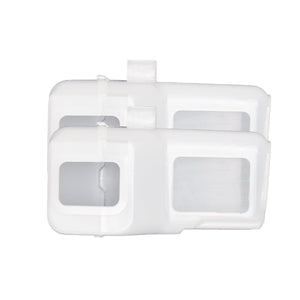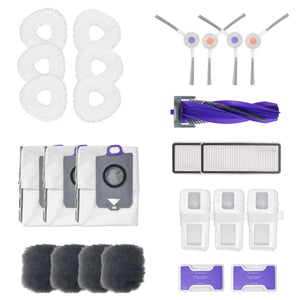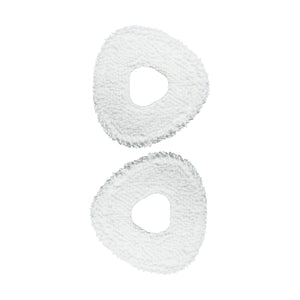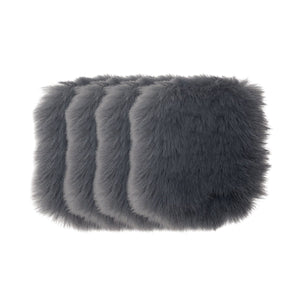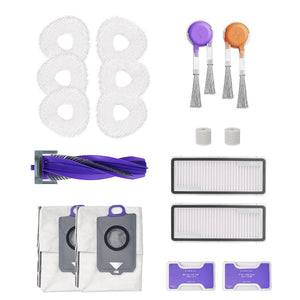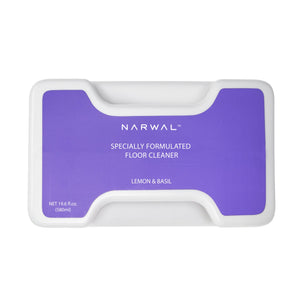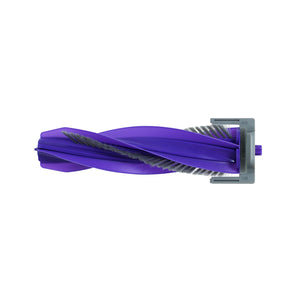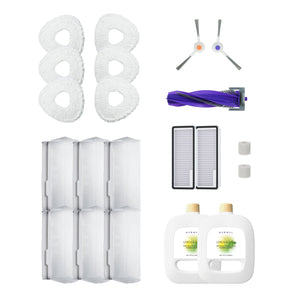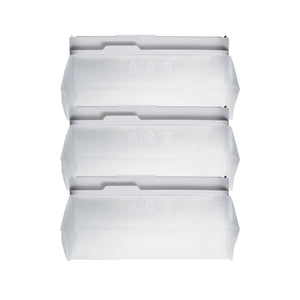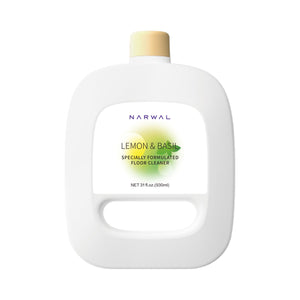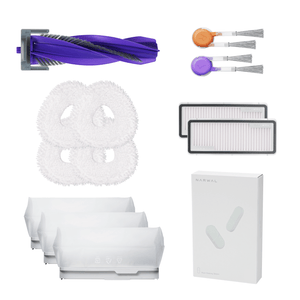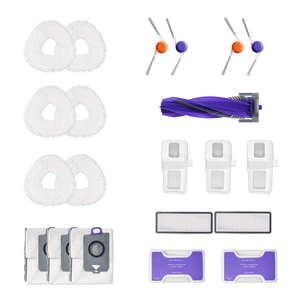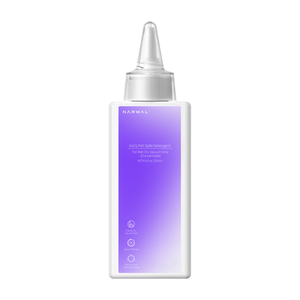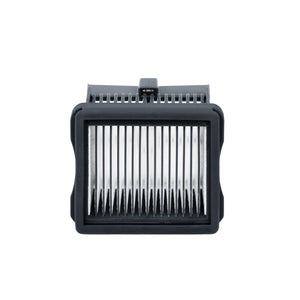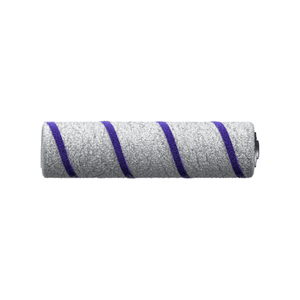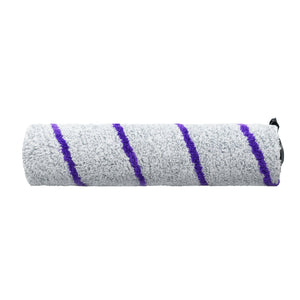You expect your robot vacuum to leave your floors spotless—but if the dustbin is full, suction drops, odors build up, and cleaning performance suffers.
Proper dustbin care is essential to keep your vacuum running efficiently and hygienically. In this guide, you’ll learn how to empty, clean, and maintain a robot vacuum dustbin, understand when and how often to do it, and see how Narwal’s low-maintenance dustbin design simplifies the process.
Why Cleaning Your Robot Vacuum Dustbin Matters for Suction and Hygiene
A well-maintained dustbin ensures you get:
- Optimal performance: A clogged dustbin reduces suction and cleaning power.
- Hygiene: Regular cleaning prevents bacteria and allergen growth.
- Longevity: Proper care extends your robot vacuum life.

How to Empty a Robot Vacuum Dustbin (Narwal & Others)
To empty a robot vacuum dustbin, remove it, dispose of the contents, and reinstall the bin securely.
The process may vary slightly between Narwal models and other brands:
For Narwal Models:
-
Remove the dust bag or dustbin when full.
-
Dispose of the dust, or replace the used dust bag with a new one.
-
Reinsert the bag or bin back into the robot vacuum securely.
For Other Brands:
-
Detach the dustbin from the vacuum.
-
Hold it over a trash can.
-
Press the release button to open the bottom flap.
-
Tap the dustbin gently to release stuck debris.
-
Close the flap and reattach the dustbin.
Tip: Don’t wait for performance to drop—empty the dustbin after every cleaning session, especially in high-traffic or pet-friendly homes.
How to Clean a Robot Vacuum Dustbin for Best Performance
To clean a robot vacuum dustbin, rinse it under water, remove debris with a soft tool, and allow it to fully dry before reuse.
Steps to Clean the Dustbin:
-
Remove the dustbin from the robot vacuum.
-
Rinse the bin under cold or lukewarm water. Avoid getting electrical components wet.
-
Scrub gently with a soft brush or cloth to remove stuck-on dirt.
-
Dry the dustbin completely before placing it back.
Pro Tip: Clean your robot vacuum dustbin at least once a week—or more often if you have pets, allergies, or heavy use.
Do’s and Don’ts for Robot Vacuum Dustbin Cleaning
Do’s:
-
Rinse with cold or lukewarm water only.
-
Air-dry thoroughly before reinserting.
-
Use mild soap if needed (gentle detergents are safe).
Don’ts:
-
Don’t use hot water—it can warp the bin or damage seals.
-
Don’t place it in the dishwasher—heat and strong detergents can crack plastic.
-
Don’t reinstall while wet—moisture can cause mold or motor damage.
-
Don’t use harsh cleaners like bleach or vinegar.
Narwal robot vacuums feature an automatic dustbin drying system that keeps moisture and odors away. This means fewer cleanings, reduced risk of mold, and a consistently fresh-smelling vacuum—ideal for busy homes and allergy-prone users.

How to Maintain Your Robot Vacuum Dustbin
To keep your Narwal's dustbin in top condition:
-
Empty regularly. Empty the dustbin after each use or when it reaches capacity.
-
Inspect for damage. Check the dustbin for cracks or damage and replace it if necessary.
-
Use approved accessories. For models like Narwal Freo X Ultra and Narwal Freo X Plus, use only Narwal-approved dust bags or bins for optimal performance and compatibility.
How Often Should You Clean and Maintain a Robot Vacuum Dustbin?
Most robot vacuum dustbins should be emptied after every use, rinsed at least once a week, and maintained according to your home’s conditions. If your household includes pets, carpeting, or allergy concerns, more frequent care may be necessary.
Maintenance tasks like filter cleaning and dust bag replacement follow different schedules depending on usage intensity. Below are two ways to determine how often you should clean or maintain the dustbin: by recognizing usage signals from the vacuum itself, and by referencing recommended routines based on household type.
Signals That Indicate Your Dustbin Needs Attention
-
Capacity Reached: When the dustbin is full, airflow is reduced and dirt may escape back onto the floor. As a rule, empty the dustbin after every cleaning session to avoid performance loss.
-
“Bin Full” Alerts: Many vacuums include lights or app notifications when the dustbin reaches capacity. Responding promptly helps maintain suction and prevents internal buildup.
-
Changes in Performance: If suction drops, cleaning becomes incomplete, or unusual noise occurs, the bin may be full even without an alert.
Recommended Maintenance Schedule by Household Type
|
Household Type |
Empty Dustbin |
Wash Dustbin |
Clean Filter |
Replace Filter |
Replace Dust Bag |
|
Small home, no pets |
Every 1–2 uses |
Weekly |
Weekly (tap clean) |
Every 6 months |
Every 6–8 weeks |
|
Large home, no pets |
After each use |
Weekly |
Weekly (tap clean) |
Every 3–6 months |
Every 4–6 weeks |
|
Home with pets |
After every use |
2–3 times per week |
Every few days (tap) |
Every 3 months |
Every 3–4 weeks |
|
Allergy-prone household |
After every use |
2–3 times per week |
Every few days (tap) |
Every 2–3 months |
Every 3 weeks |
|
Carpet-heavy home |
After each use |
Weekly |
Weekly (tap clean) |
Every 3–4 months |
Every 4 weeks |
How Narwal Flow Differs from Other Robot Vacuums in Dustbin
While most robot vacuums share similar dustbin cleaning needs, the way they handle dust storage, odor control, and user maintenance varies across brands.
Brand-by-Brand Approaches
-
iRobot (Roomba): Requires emptying after every run. Dustbins need weekly rinsing, and HEPA filters are not washable, requiring periodic replacement.
-
LG: Uses compacting dustbins to increase capacity, but the enclosed debris may lead to clogging or odor without careful manual cleaning and drying.
-
Shark: Offers large dustbins but often requires brushing out trapped debris from corners. Filters need frequent attention to maintain airflow.
Narwal Flow: A Fully Integrated Dustbin System
Narwal Flow takes a different approach by combining dust collection, drying, and maintenance access into a single, enclosed system. This design reduces the number of steps needed to keep the vacuum clean and operational.
-
Sealed Storage with Compression: A 2.5L internal dust bag securely stores debris and uses built-in compression to hold more dust between replacements, reducing the need for frequent emptying.
-
Automated Moisture Control: Warm air drying at 104°F (40°C) helps eliminate residual moisture after each run, lowering the chances of odor and mold buildup.
-
Minimized Handling: All dustbin-related components—storage, filter, and drying—are located in the base station. Users don’t need to interact with multiple parts after every use, unlike models that require direct access to the bin.
[cta:flow-robot-vacuum-and-mop]
By integrating these features into one system, Narwal Flow simplifies regular dustbin maintenance and reduces manual intervention—especially useful in homes with pets, allergies, or frequent cleaning needs.
Related Readings:
Do You Really Need A Self-Emptying Robot Vaccum?
Does Narwal Offer an Auto-Empty Dustbin Robot Vacuum?
Not in the traditional sense. Narwal Flow doesn’t use an external suction system to transfer dust. Instead, it relies on an internal dust bag and drying mechanism built into the base, which reduces the need for frequent emptying.
This self-contained setup achieves many of the same benefits as auto-empty vacuums—like hands-free maintenance and odor control—but with a different design approach.
Common Robotic Vacuum Dustbin Issues and Solutions
Despite regular maintenance, you may experience issues with your robot vacuum dustbin. Here are some typical problems and their solutions:
|
Issue |
Solution |
|
Dustbin Not Latching Properly |
Align the dustbin correctly while ensuring it is free of debris along the edges. |
|
Reduced Suction Power |
Empty the bin, clean the filters, and check for blockages in the suction inlet. |
|
Unusual Noise During Operation |
Remove and clean the dustbin, ensuring all components are properly seated when reassembling. |
If these issues persist, consult your user manual or Narwal customer support for further assistance.
Robot Vacuum Dustbin Smells: Causes and Fixes
Dustbin odors often come from decomposing food particles, pet hair, or damp dust left inside too long. In humid homes, this can also trigger mold growth.
To fix it, empty the bin after every run, wash it weekly with mild soap, and always let it dry fully before reinserting. If odors remain, use a mild baking soda solution and check for worn rubber seals or a full dust bag. Replace these parts if necessary.
Narwal Flow advantage: Its HEPA dust bag locks in allergens and odors, while the 45-minute auto-drying cycle prevents moisture buildup. This keeps the dustbin fresher for longer, especially in pet or high-humidity households.
Additional Robot Vcauum Cleaner Dustbin Care Tips
Self-Emptying Models
If your robot vacuum comes with a self-emptying base, remember that the large dust bag inside also needs attention. For most households, replacing or emptying this bag once a month is enough. In homes with pets or heavy daily use, check it more often to prevent clogs and odors. Always use the correct replacement bags recommended by the manufacturer to maintain compatibility and filtration quality.
Sensor Cleaning
Dust and debris can collect on the sensors located around the dustbin or on the robot itself. These sensors help detect when the bin is full or guide the vacuum’s navigation. Wipe them gently with a clean, dry cloth every few weeks. Clear sensors ensure accurate performance and prevent issues like false “bin full” alerts or navigation errors.
Conclusion
Taking care of your robot vacuum's dustbin is important for its performance and cleanliness. Regularly emptying and cleaning the dustbin helps your vacuum work better and last longer.
Narwal's innovative dust processing features, like the 1L HEPA dust bag and dust compression technology, make this job easier. Follow the tips to keep your vacuum in top shape and use Narwal-approved parts for the best results.
Call to Action
Ready to experience the convenience and superior performance of robot vacuums? Explore our top models, including the Freo X Ultra and Freo X Plus, featuring advanced dustbin technology.
For optimal results, don't forget to browse our accessories selection, such as replacement dust bags and filters.
Contact our customer support team to find the right Narwal or learn more about our products' features. We'll show you the way to easy, hands-free living.
FAQs
How often should I empty my Narwal's dustbin?
For optimal performance, Empty after each use or when full.
Can I cleanse my Narwal's dustbin in the dishwasher?
No. Hand wash with running water and dry thoroughly before reattaching to the robot vacuum.
What should I do to my damaged dustbin?
If you see cracks or damage, replace the dustbin to avoid further issues and performance problems.
Why does my robot vacuum say the dustbin is full when it isn’t?
This usually happens when dust or hair blocks the dustbin sensor. Even a thin layer of debris can trigger a false “bin full” alert. Remove the dustbin, wipe the sensor with a clean, dry cloth, and make sure the edges of the bin are free of dirt. If the message continues, check the filter and suction path for clogs. Some models may also need a quick reset to clear the alert.
How can I tell when my robot vacuum dustbin is full?
Most robot vacuums notify you with an indicator light or an app alert when the dustbin reaches capacity. Other signs include weaker suction or leftover dirt on the floor. For best results, don’t wait for the alert—empty the dustbin after every cleaning cycle. Narwal Flow makes this easier with its large-capacity HEPA dust bag and compression technology, so you can go weeks without emptying while still keeping the system clean.
Can I use third-party dust bags in my robot vacuum?
It’s not recommended. Third-party bags may not fit tightly, which can reduce suction power, allow dust leaks, or damage the motor. For the best results and warranty protection, always use dust bags approved by the manufacturer. Narwal Flow models are designed to work with Narwal’s certified HEPA dust bags for maximum filtration and hygiene.
How to clean Narwal Freo?
Gently rinse the dustbin with cold water and let it air dry. Do not use hot water or harsh chemicals. Narwal Freo’s dustbin should be cleaned 2–3 times a week in high-use homes.
How to empty Narwal Freo X Ultra dustbin?
Open the robot’s lid, remove the dust bag, and replace it with a new Narwal-approved bag. The process takes under a minute and should be done when prompted by the app or after heavy cleaning.
Why does my robot vacuum smell bad?
Odors usually come from moisture and debris buildup inside the dustbin. Make sure to dry the bin after rinsing, clean filters regularly, and use warm air drying features if available.
























